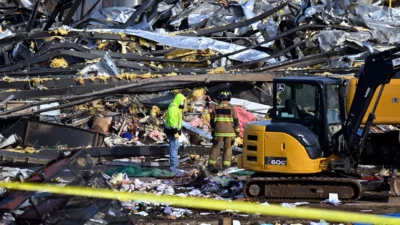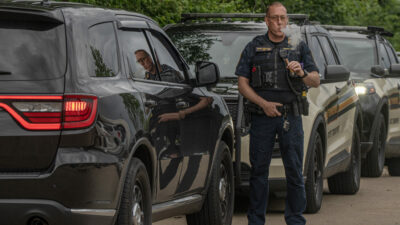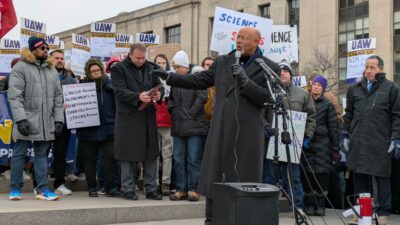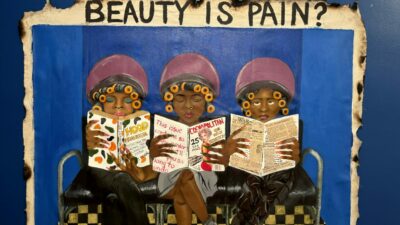Janine Johnson-Williams was afraid of storms. But she also feared that she wouldn’t be able to give her 19 grandkids a special Christmas if she called out of work at the Mayfield candle factory Friday night.

The company had been ramping up production, and she was pulling 10 to 12-hour shifts. Her husband, Ivy Williams, said coworkers told her that if she missed a scheduled shift, she wouldn’t get another one for the remainder of the holiday season, although a spokesperson for the company denies this.
Williams, 62, and his wife, 50, started working at the factory at the same time around nine months ago. He retired in October. She died there Friday evening after one of the deadliest tornadoes in Kentucky history blew through the factory.
Up to 70 people there were initially feared dead, but by Monday, company and state officials were certain that most of the 110 people there that night were accounted for and alive. Johnson-Williams was one of eight people killed there, including a deputy guarding incarcerated people hired through the Graves County jail.
The way her husband sees it, nobody should have been in the factory that night.
“I just wish they had called and said, ‘No one come in till it’s over, till we see what’s going on. Till it’s passed over.’”
The decision to keep the factory open has led to tremendous scrutiny for Mayfield Consumer Products, a supplier for brands including Bath & Body Works. Company officials have expressed condolences for their employees and their families in recent days, and a public relations firm working for the company said Monday that any allegation workers were threatened with lost work is untrue.
But four employees told NBC News they were threatened with firing if they left the factory early Friday night. And public records, court documents and interviews show the company has a history of worker safety violations, accusations of discrimination and relying on vulnerable workers like those incarcerated and recruited from Puerto Rico for low-wage jobs.
Factory’s decisions, history questioned
By the time the factory’s workers clocked in Friday, warnings about severe weather and possible tornadoes that night had been publicized for hours. The violent storm took lives across five states, and Kentucky officials have so far confirmed at least 74 deaths.
In his press briefing Monday, Beshear said he didn’t know about the severe weather procedures in the candle factory — “and I don’t have any reason to fault that, either.”
“I mean, how do you tell people that there’s going to be one of the most powerful tornadoes in history and it’s going to come directly through your building?” Beshear asked.
Employees told media in the hours after the storm that they went to a hallway, the designated shelter area, when the sirens went off.
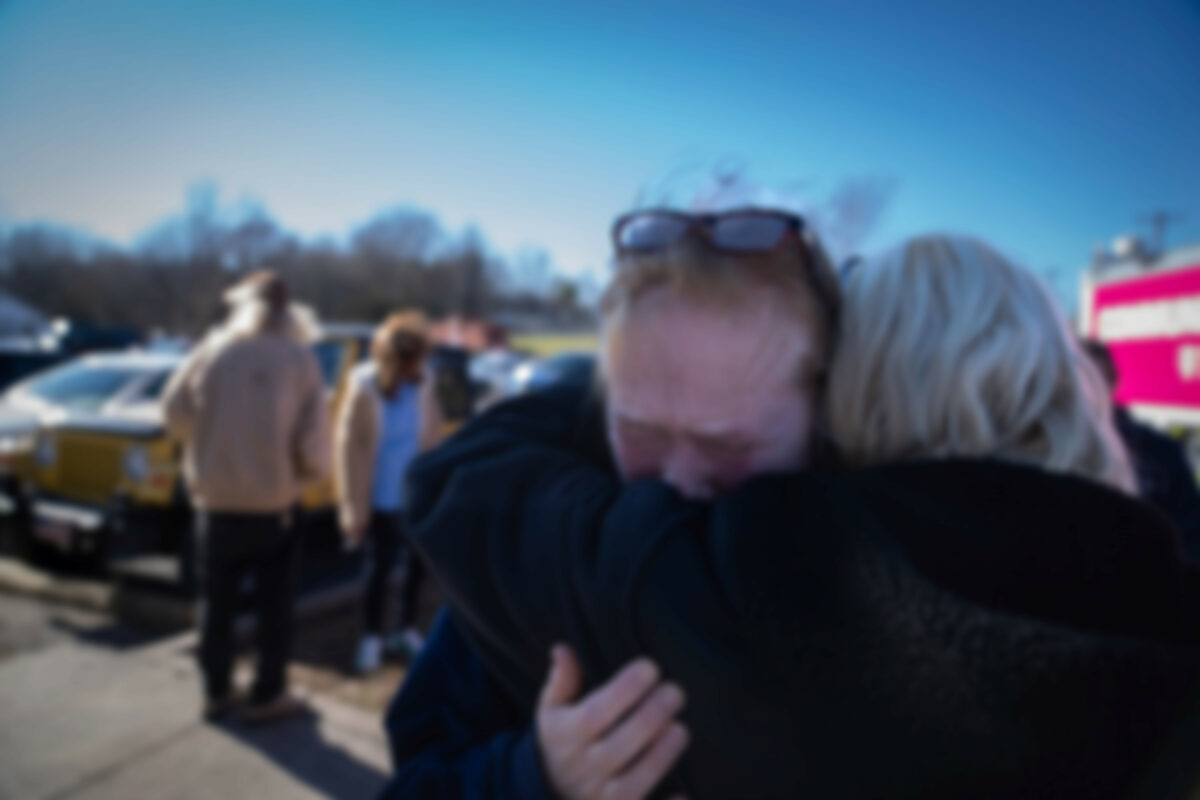
John Caudill, a Bowling Green-based attorney who has represented former employees of the factory, wants to know why 110 people were still in the factory when the tornado hit.
“That tornado was well known for a couple of hours. You could track it on a number of different weather apps,” said Caudill, a former assistant U.S. attorney. “This wasn’t the 1800s where a storm comes in the dark of the night and no one knows about it.”
Caudill became familiar with Mayfield Consumer Products after he filed a lawsuit in 2019 on behalf of Armando Rivera Hernandez, a worker from Puerto Rico who alleged the company fired him for being overweight.
Hernandez was one of dozens of workers recruited to work on the factory floor by company representatives in Puerto Rico, Caudill said.
Bob Ferguson of the D.C.-based public relations firm Hawksbill Group said Mayfield Consumer Products is constantly recruiting in a tight labor market, including in Puerto Rico.
“Many of these people don’t speak English. My client didn’t speak English,” Caudill said. “These are people who come from economically challenged backgrounds that are willing to move to Kentucky from Puerto Rico for jobs paying $10, $12 an hour.”
The lawsuit included a screenshot of a text message allegedly sent by Mayfield CFO David Burch, which says, “We are working diligently to clean up the epileptic, obese, pregnant, and special needs issues.” WKMS reported that the lawsuit alleged it referred to Puerto Rican recruits with physical limitations, medical conditions, disabilities, or a combination of conditions.
The allegations weren’t aired out in court because a judge dismissed that lawsuit, and a subsequent appeal. The factory’s contract specified that any complaints Hernandez had about his employment in Mayfield would be routed to the Puerto Rico Secretary of Labor and Human Resources, not Kentucky government.
The company also had contracts with at least two jails to bring incarcerated people to work in the factory.
Seven people from the Graves County jail were working there during the tornado as part of a Department of Corrections-approved work program, along with jail deputy Robert Daniels. Daniels died of his injuries.
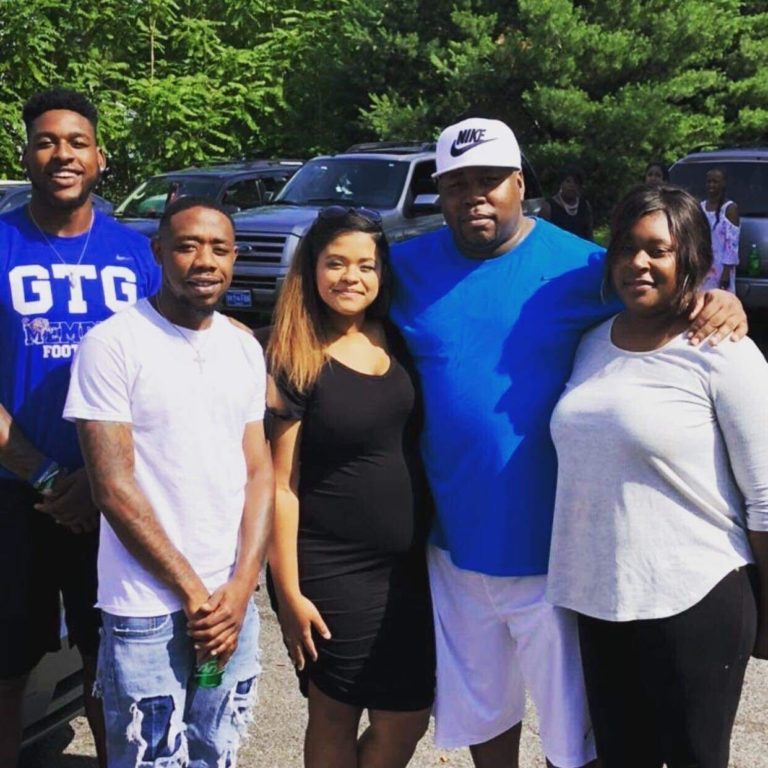
The factory also had an agreement with Calloway County Jail, but jailer Kenneth Claud said no one from his jail was there the night of the tornado.
KyCIR has requested but not yet received details about the jail workers’ wages.
Graves County jailer George Workman said the program had only gotten up and running the week of the tornado, but wages paid to incarcerated workers would go to paying off any fees they had accrued, and the rest would be deposited in the workers’ canteen accounts.
Workman said he didn’t know what workers were paid offhand, but believed it was anywhere from $13 to $15 an hour.
Bianca Tylek, executive director of the advocacy group Worth Rises, says incarcerated people are especially vulnerable to exploitative workplaces. Worth Rises advocates against the exploitation of jail and prison labor.
“That’s because they have little to no worker rights,” Tylek said. “They have no right to unionize, they have no rights to workers compensation, they have no right to vacation, they have no right to sick days. They have literally just no real rights.”
‘Was this an unavoidable tragedy?’
Though Friday night’s tornado already ranks as the most deadly and devastating in modern Kentucky history, advocates and critics say it’s still crucial to examine the company’s policies and safety protocols.
“At this point we’re just looking at information, and the threshold question is was this an unavoidable tragedy? All other questions fall from there,” Caudill said. “And we don’t have the answers to those questions 48 hours in.”
OSHA regulations say companies have to identify places to take shelter, be familiar with community warning systems and establish procedures to account for people in the building.
“The next question is do these companies follow those policies or is it just lip service, window dressing?” Caudill asked.
Federal safety records show the factory had more injuries per 100 full-time employees than is average for the industry.
According to records from the Occupational Safety and Health Administration, Mayfield Consumer Products reported 4.2 injuries per 100 full-time employees in 2020, compared to 3 at other similar manufacturers.
For injuries resulting in days away from work, restrictions or transfers, also known as the DART rate, the factory clocked a rate of 2.4 in 2020, again above the industry average of 2.1 injuries per 100 full-time employees.
None of the injuries were fatal, but several required days off from work or other accommodations.
OSHA fined the company $16,350 for violations found during an inspection in 2019. OSHA considered seven of those violations serious, including defects in electrical protective equipment, control of hazardous energy and practices regarding handling electrical equipment.
The company contested all 12 violations found by inspectors.
The factory complied with standards from the Federal Emergency Management Agency and OSHA, according to Ferguson of the Hawksbill Group.
Ferguson said employees were free to stay home or leave their shift early with no retribution.
The factory did regular drills and training, he said, and on the night of the storm, employees were taken to the strongest part of the factory in the designated shelter area. There was no basement in the facility.
“The training and the drills were effective and we were able to get all our employees in the strongest part of the plant. And I think that’s why, so miraculously, 102 employees survived this awful, unprecedented storm,” Ferguson said.
Jess Clark contributed to this report.
Jared Bennett is an investigative reporter for the Kentucky Center for Investigative Reporting. Before KyCIR, he was a reporter the Center for Public Integrity and a digital producer for WBUR in Boston.

